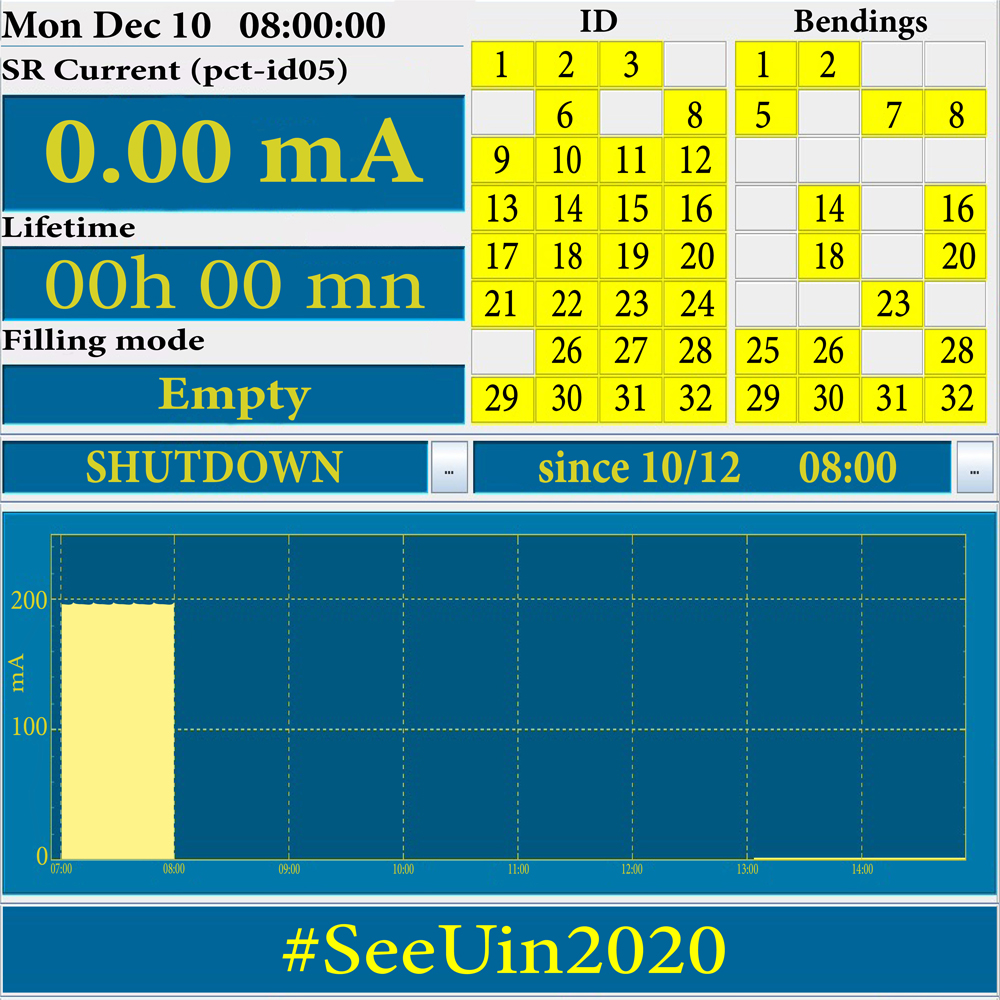On 10 December 2018 at 08:00, the ESRF stopped the beam in the original storage ring for the last time ever. Since 1992, the ESRF has produced and delivered extremely high quality and reliable X-rays to the international scientific community, continuously improving on performances and pushing the accelerators to their limit. Today marks a key date in the history of the ESRF and the beginning of a 20-month shutdown to dismantle the storage ring and install a new, revolutionary X-ray source. The Extremely Brilliant Source (EBS) will open to users in 2020.
 The beam is stopped for the last time in the original storage ring. #SeeUin2020.
The beam is stopped for the last time in the original storage ring. #SeeUin2020.
EBS represents an enormous challenge, not only in pushing science and technology to its known limits, but also on a human and logistical scale. Over the next 20 months, the ESRF will put in stand-by mode its scientific user programme, dismantle the current 844m-circumference storage ring and install the new EBS lattice within the existing infrastructure. The new source will be achieved by replacing the existing storage ring, a double-bend achromat (DBA) magnet sequence, with an innovative and award-winning hybrid multi-bend achromat (HMBA) design, developed at the ESRF. Teams will have eight months to install 128 girders, supporting over 10 000 components precision-aligned to within half the width of a human hair, in the tunnel.
EBS relies on a number of key innovative technologies. This first-of-a-kind new storage ring combines an increase in the number of bending magnets with seven, as opposed to two, bending magnets per cell and optics that maximise the stable phase space volume available for the electron beam, reducing the horizontal emittance. The result is a tighter packing of electrons, increasing the brightness and degree of coherence of the X-rays by two orders of magnitude. This gives the EBS beams laser-like properties approaching those of X-ray free–electron lasers (XFELs) such as the European XFEL, and makes EBS the first high-energy fourth- generation synchrotron light source. EBS is also using permanent magnet technology for the 128 dipole magnets, achieving a significant reduction in electricity consumption. In the new EBS storage ring, 1 000 innovative magnets – nearly twice as many as in the previous storage ring – will be squeezed into the same space inside the accelerator tunnel.
The new EBS storage ring will be complemented by the construction of four brand-new flagship beamlines and the full refurbishment of existing beamlines; an ambitious instrumentation programme with a focus on high-performance detectors; and cutting-edge experimental control and data analysis tools, all designed to exploit the enhanced performance of the new source.
The new EBS beamlines will make it possible to probe complex materials at the atomic level in greater detail, with higher quality, and much faster. These new beamlines will help scientists to address major challenges facing our society, including the development of the next generation of drugs, biomaterials and sustainable materials, and to provide deep insights into the complex mechanisms governing living organisms. They will help elucidate our recent and ancient past, as manifested in historical artefacts and fossils. What’s more, they will provide unique opportunities for applied and innovation-driven research.
EBS will be a powerful new instrument for the international scientific community, opening the door to new experiments in X-ray science. By pushing the frontiers of accelerator technology, the EBS lattice has inspired other major light sources around the world. EBS reinforces what has always been, and will always be, the ESRF’s mission: to pioneer synchrotron science.